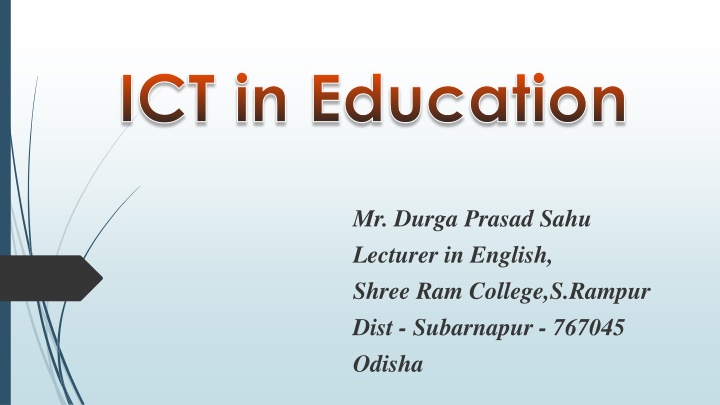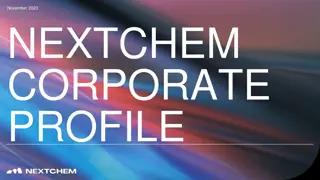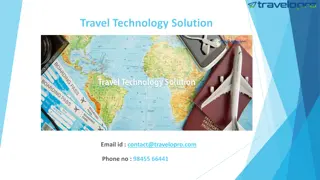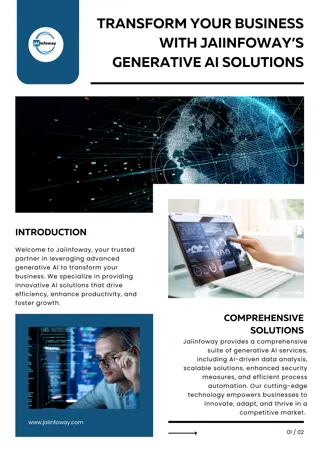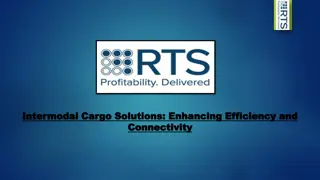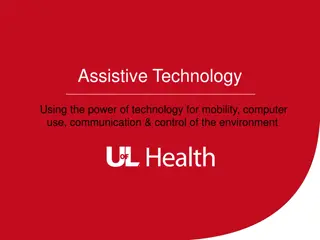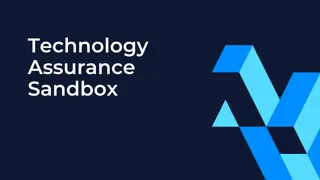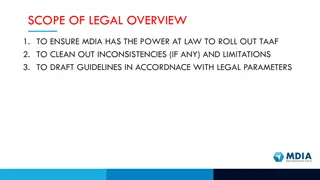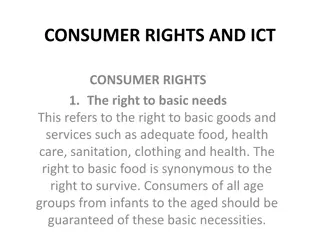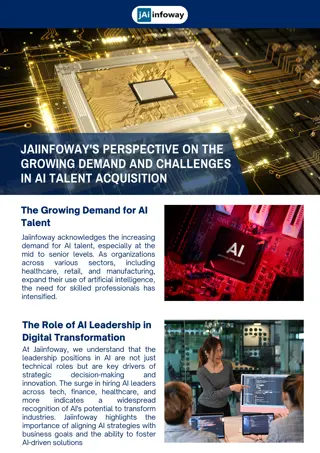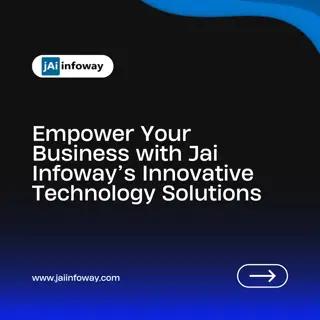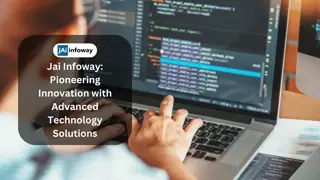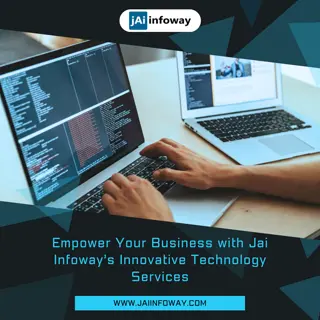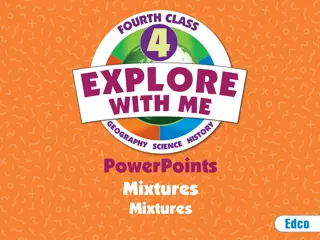Enhancing Education Through Innovative Technology Solutions
In this detailed discussion, Mr. Durga Prasad Sahu, a Lecturer in English at Shree Ram College, explores the crucial role of Information and Communication Technology (ICT) in revolutionizing education. He emphasizes the need for equality in information access and quality education, offering practical tips on how to achieve this goal. Additionally, he highlights the advantages for teachers in utilizing e-content creation and certification and discusses the potential impact of bridging educational inequalities and empowering students through technology. The post also delves into the salient features of the UGC plan for colleges, focusing on connectivity and access to research resources. By leveraging innovative technology solutions, the education system can propel towards positive change and empower students for a better future.
Download Presentation

Please find below an Image/Link to download the presentation.
The content on the website is provided AS IS for your information and personal use only. It may not be sold, licensed, or shared on other websites without obtaining consent from the author.If you encounter any issues during the download, it is possible that the publisher has removed the file from their server.
You are allowed to download the files provided on this website for personal or commercial use, subject to the condition that they are used lawfully. All files are the property of their respective owners.
The content on the website is provided AS IS for your information and personal use only. It may not be sold, licensed, or shared on other websites without obtaining consent from the author.
E N D
Presentation Transcript
ICT in Education Mr. Durga Prasad Sahu Lecturer in English, Shree Ram College,S.Rampur Dist - Subarnapur - 767045 Odisha
FUTURE NEED EQUALITY IN ACCESS TO INFORMATION & QUALITY INDEPENDENT OF GEOGRAPHY.
HOW TO DO THIS??? MAKE ENGAGING OF INFORMATION FLOW NETWORKS KNOWLEDGE ACCESIBLE TO ALL THROUGH 1. Understand local needs and ethos. 2. Keep in mind present connectivity access at location. 3. Anticipate future change.
THE CLEVER AND INNOVATIVE USE OF INFORMATION COMMUNICATION TECHNOLOGY : ANSWER TO : Quality Quantity Our age old problems
ADVANTAGE TEACHER Fund for e-content creation. Certification of e-activity as a formal pre-requisite for promotion. Mechanism for e-content certification. Method for deciding equivalence of certified e-content material with research paper. Consultancy advantage with private firms.
IMPACT Removal of great inequalities which exist within the country. Creation of virtual educational facilities that are local specific. Enhancing our strength to face outside challenges.
AND MOST IMPORTANT STUDENTS WILL GET EMPOWERED & THEY WILL DRIVE THE SYSTEM FOR BETTER CHANGE.
SALIENT FEATURES OF UGC PLAN FOR COLLEGES (2f & 12B) Dial-up connectivity with any locally available network. Connectivity for unlimited hours. Connectivity to UGCINFONET. UGCINFONET room at each college, partial assistance in adding computers.
USE : RESEARCH e-formatted journal (UGC to pay for multiple user licence) Access to other research network, CSIR, DAE, ISRO, DBT, DRDO. Access to world of information at global level.
X plan special scheme of UGC: UGC-infonet : A project for interlinking Universities and Colleges. Scalable architecture to extend the network from Universities to affiliated colleges as well. Nation wide terrestrial backbone using Fibre Optic Links. Linkage with other Academic and Research networks all over the world. Broadband multimedia and video channels for distance learning. Resources for researches and scholars for taping the most up-to- date information. Channel for globalisation of education and for facilitation of the universities in marketing their services.
ERIC ASHBYS FOUR REVOLUTIONS IN EDUCATION 1. Emergence of Schools. 2. Invention of Alphabets. 3. Invention of Printing Technology. 4. Influence of Information and Communication Technology in Education.
Use of ICT in education is not encouraging: 1. How many colleges make regular use of UGC s Countywide Class Room Programmes? 2. How many Colleges tap the potentials of Computer and Internet for teaching and learning. 3. How many teachers go beyond chalk and talk and explore the possibilities and potentials of Modernisation of Teaching in this Digital age?
TWO REVOLUTIONS OFFER NEW OPPORTUNITIES TO MEET THE NEW CHALLENGES 1. ET REVOLUTION 2. ICT REVOLUTION
What? Education technology is the development, application and evaluation of systems, techniques and aids to improve the process of human learning.
THE ET REVOLUTION ADDRESSES BOTH THE ISSUES OF TECHNOLOGY IN EDUCATION AND TECHNOLOGY OF EDUCATION
FOUR INFORMATION REVOLUTIONS 1. Writing was invented 6000 years ago. 2. First written book was published in 1300 B.C. 3. Invention of printing press in 1455 A.D. 4. The ICT-revolution is the Fourth Information Revolution.
WHAT? Information and communication technology is defined as the use of hardware and software for efficient management of information , i.e. storage, retrieval, processing, communication, diffusion and sharing of information for social, economic and cultural upliftment .
Information and Communication Technology improves different aspects of Higher Education such as: Teaching Sharing Of Resources Increasing Accessibility Research And Development Virtual University Human Resource Development Distance Education Total Quality Management Bridging The Gap Between the Haves And the Have-nots
INFORMATION AND COMMUNICATION TECHNOLOGY AND TEACHING 1. IT provides access to different sources of correct and comprehensive information. 2. IT broadens the information base. 3. IT provides variety in the presentation of content. 4. IT provides flexibility to learners for quality learning.
INFORMATION AND COMMUNICATION TECHNOLOGY AND SHARING OF RESOURCES In the backdrop of decreasing investment in Higher Education, Information Technology enables the creation of a central facility which can be shared by students, teachers and researchers from different departments. Example: Inter University Consortium(IUC) of UGC.
ICT AND TQM ICT will bring desirable changes in the input, process, output and feedback components of teacher education system.
TEACHER EDUCATION SYSTEM CONEXT INPUT PROCESS OUTPUT Human Resources Instructional Quality Teacher Characteristics Student Characteristics Institutional Management Socio-Political Context Student Achievements Physical Resources Student Participation Support of Agencies Curriculum Quality
THE OBJECTIVES OF THE ICT LITERACY IN PRE-SERVICE TEACHER EDUCATION To create general awareness amongst teacher trainees about information and communication technology and its use in teaching learning. To acquaint teacher trainees with parts of computer system and their functions. To develop vocabulary of information and communication technology amongst teacher trainees. To develop competency amongst teacher trainees of using off-line electronic resources (CD-ROM etc.) and on-line resources such as the world wide web. To develop competency and encourage teacher trainees in using NET for improving school teaching and personal academic (on-line resources).
EDUCATION IMPLICATIONS OF ICT 1. Time, space and socio-economic factors are no longer major barriers to learning. 2. Decentralized nature of the new technology frees the learners from the technology provider. 3. Learners have access to variety of learning resources. 4. Up-to-date knowledge from any part of the world. 5. New media allows interactivity, learner need not be a passive recipient of knowledge. 6. New technology allows the learner to receive information in a variety of formats.
VARIETY OF ICTs Printed Text Audio Cassettes Video Cassettes Radio Cable Television Satellite Television Computer- based audio- graphics system Telex
Continued Video discs Computer- controlled interactive video Video conferencing The internet Computer- based multimedia Remote interactive databases Virtual reality World Wide Web
FIVE GENERATIONS OF DELIVERY TECHNOLOGIES 1. Correspondence model. 2. Multimedia model 3. Tele-learning model 4. Flexible learning model 5. Intelligent flexible learning model
National Council of Education Research and Training (NCERT) through its Central Institute of Education Technology (CIET) had produced audio/video programmes on a wide range of subjects related to teacher education. The State Institutes of Education Technology (SIET) also telecast programmes in the states of Odisha, Andhra Pradesh, Maharashtra and Gujarat.
WHY? It is true that a teacher can not be replaced by technology. It is also true that a teacher who does not make use of technology will be replaced by a teacher who makes use of technology.
HOW? Educational technology brings education to people instead of bringing people to education. It is the systematic way of designing, carrying out and evaluating the total process of teaching and learning in terms of specific objectives based on findings from research in human learning and communication.
